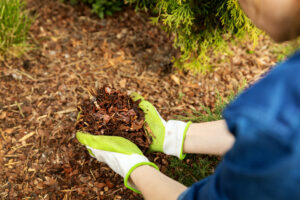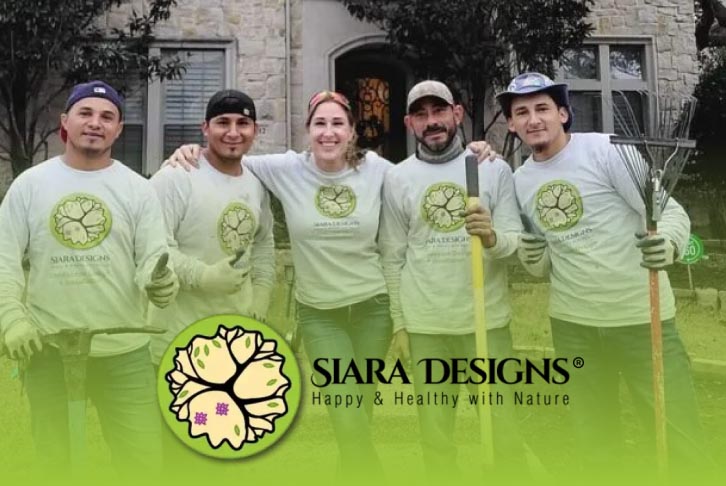
Mulch belongs in nearly every garden. Once it is installed, it saves time and looks great, fights weeds, insulates plants, and saves time when it comes to weeding, fighting pests, and keeping your garden watered. Mulch goes a long way in keeping your flowers, fruits, and vegetables healthy.
It is essential to choose the right mulch for your project. Most will fight off weeds and pests, but it can do so much more if you get the right kind. Follow this guide to mulch to ensure you are using the perfect mulch for your landscape.
Mulch Types for Your Garden
Choose between organic and inorganic mulch for your garden. Organic mulch comes from materials like ground leaves, straw, compost, wood chips, shredded bark, pine straw, sawdust shavings, or paper. Inorganic mulch may come in the form of landscape fabric, pebbles, gravel, rubber mulch, plastic mulch, or stones.
Your garden will benefit from either since they discourage weeds. However, organic mulch may benefit the soil in the mulched area as it breaks down. Inorganic mulches may also be a good choice but for different reasons.
Inorganic mulch can absorb heat during the day and emit it back into the soil and surrounding plants at night. Plants that thrive in warm conditions will appreciate the added layer of warmth.
Mulch Choices to Consider
There are multiple types of mulch that you might consider. Make sure the mulch you are installing is right for your project.
Wood Chips
The garden center at your home improvement store will sell wood chips by the bag. This is often a good choice for mulching around flower gardens and shrubs. To save money, consider contacting a tree care or utility company that operates nearby. They often have wood chips available.
If you have access to a wood chipper, run your old Christmas tree through the chipper so that you can use it as mulch rather than just throwing it away. Another option for saving money on mulch is using your lawn mower’s bag to collect and shred leaves from trees that are dropping leaves on your property. They will work perfectly as mulch.
Wood chips and shredded leaves do a great job of mulching flower beds, creating borders around shrubs, and defining garden paths. They may, however, get in the way of beds that must be replanted year after year. So, consider another type of mulch for areas you plant annuals and vegetables.
Leftover Grass Trimmings
Grass clippings are easy to get if you have a yard to cut. They do a good job of working as a lawn fertilizer. This type of mulching material is ideal for vegetable gardens since it is so rich in nitrogen.
Compost for Mulch
Once you have used compost to plant your garden, if you have some left, transform it into mulch. Your plants will thrive in the enriched soil.
Spread a small amount over planted areas, but plan to top it with another mulch. This will ensure the mulched areas hold moisture so that they benefit the plants that are growing there.
Hay or Straw
Straw and hay can be heroes in a vegetable garden when used to mulch. It creates a nice, clean appearance while retaining moisture and suffocating weeds. As the straw decomposes, the soil is supplemented with rich organic matter.
If you choose straw or hay, it must be free of seeds and weeds. Take caution not to pile it high around the stems of your vegetables or the trunks of your plants. This will prevent damage from vermin and slugs.
Landscape Fabrics Can Be the Answer to Many Problems
Landscape fabric keeps weeds at bay while letting air and moisture through. Landscape fabric may decompose more quickly if it is exposed to direct sunlight. It works better if a layer of mulch is put over the top of it. The mulch gives you a more polished look, while the landscape fabric does its job out of sight.
Tips for Mulching Your Garden
To successfully install mulch, there are a couple of important recommendations that will help you to avoid weeds. Make sure the area you are mulching is weed-free before you put the mulch in place. To further discourage a weed invasion, use a thick layer of mulch to make it more difficult for them to see the light of day.
Mulches that hold moisture can mean the soil does not get warm as quickly as it would without mulch. For this reason, if you have perennials and bulbs planted, you should rake back the mulch. This will allow warmth to permeate the ground and will keep the wet organic material from causing the stems of the plants to rot.
If your plants have woody stems, like those of shrubs or trees, voles, mice, and other vermin may be motivated to build their nests there. If you have trees that require mulch, make sure you give the trunk at least half a foot of breathing room.
The Number One Way to Ensure You Are Using the Correct Mulch
The best way to ensure the mulch you are using is the correct choice for your garden is to speak to the landscaping experts with Siara Designs. You can avoid costly mistakes by letting the specialists do what they do best and determine for you what your garden needs most.

